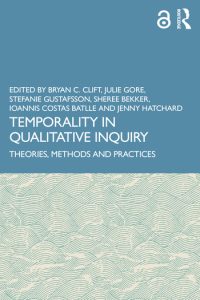
Source: https://www.routledge.com/Temporality-in-Qualitative-Inquiry-Theories-Methods-and-Practices/Clift-Gore-Gustafsson-Bekker-Batlle-Hatchard/p/book/9780367538514
Rhythmanalysis as a method to account for time in qualitative research.
Abstract
Based on the premise of this chapter, Picasso’s understanding of ‘rhythm as the perception of time,’ we argue that rhythmanalysis is a helpful method to account for time in qualitative research. To this end, we draw on Nicole’s research on how academic staff with chronic illnesses and disabilities specifically interact with the buildings and what impact the physical environment has on their everyday experience. We commence the chapter with a brief overview of the conceptualisation of time and rhythm before outlining the methodological approach to Nicole’s research. We present a time-lapse, recorded via a GoPro, and demonstrate how this approach enabled a rhythmanalysis of a university building. In the findings section we highlight key observations that then enable us to reflect on the role the rhythmanalysis plays in accounting for time and in uncovering what would otherwise remain hidden.
Reference:
Brown, N., & Morgan, C. (2021). Rhythmanalysis as a method to account for time in qualitative research. In: Clift, B.C., Gore, J., Gustafsson, S., Bekker, S., & Batlle, I. C. (eds.). Temporality in Qualitative Inquiry: Theories, Methods, and Practices. Routledge.
Leave a message: